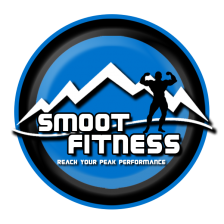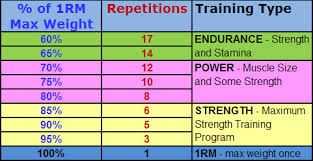Percentages are awesome.
I use them in nearly all of the training programs I write – both for myself and for my clients – and not only do they allow you to regulate the weight/intensity used on a given exercise (and control the progression scheme moving forward), but they give you an idea of what load you should be using for a target number of sets and repetitions, and ensure that (in most cases) you’re not taking each set to failure.
With that being said, percentages do have their drawbacks (the main one being that they don’t take in to account daily to weekly fluctuations in stress and overall fatigue), and relying exclusively on percentages – without allowing yourself to auto-regulate your weights based on how you feel – can cause much more harm than good.
For example, let’s assume that today (Monday), your program calls for you to work up to a new one rep max (1RM) on the back squat.
Yesterday, you watched the Redskins (your favorite football team) absolutely demolish the Texans (ha ha, yeah right), ate a bunch of good food, got 9 hours of sleep, and are coming off of two “rest” days where your body was fully able to relax and recover.
As such, you go in to today’s workout absolutely AMPED to squat.
Stress is low, fatigue is low, and you hit an all-time PR of 405lbs (FREAKIN AWESOME MAN!).
Next Monday, your program calls for 5 sets of 5 reps at 80% of your 1RM (which is now *theoretically* 405 lbs).
The weekend is pretty similar to last week (the Redskins destroy the Jacksonville Jaguars – probably not gonna happen), and you go in to the gym again with low stress, low fatigue, and 325lbs (80% of 405) goes up like butter.
The following Monday, the program calls for 6 sets of 3 reps at 90% of your 1RM (which again, is still *theoretically* 405 lbs).
This weekend however, the Redskins don’t win (big shocker there), you run a half-marathon with your girlfriend on Saturday (which you NEVER do), and you stay up all night on Sunday studying for a big test (and only get 2 hours of sleep).
Obviously, your stress and fatigue levels are A LOT higher than they were last week.
Do you think your 1RM – at least for today – is still 405lbs?
Probably not.
It’s probably closer to 350lbs, or 375lbs (remember, fatigue masks performance), but because the program calls for 6×3 at 365lbs (90% of 405) – and you’re not allowing yourself to auto-regulate your weights based on how you feel – you go for 365lbs anyway.
And at this point, there are three things that could potentially happen:
1. You get injured.
2. You miss the lift (which decreases confidence and will have a negative impact on performance moving forward).
3. You somehow manage to hit 365 for all 6 sets of 3 (maybe you were trying to impress a hot girl or something), but every set was a grind (and pretty much taken to failure), and that generates a heck of a lot more fatigue that carries over in to the next day or week of training.
If you had listened to your body – and lightened the load based on how you felt – all of this could have been avoided.
But because you were married to a percentage – and went for a load that you knew felt WAY heavier than normal – you turned what could have been a descent workout in to a minor or major setback.
This is why (we’re switching back to the real world here) – even though I may have a percentage I’m *aiming* for in a given workout – I ALWAYS auto-regulate based on how I feel.
If I’m supposed to be going for 90% of my 1RM, and 90% feels light, I’m bumping up the weight (many PRs have been set on days I wasn’t technically supposed to be going for one).
Conversely, if I get to the gym and 60% feels like it’s gonna snap my back in half, I’m obviously not going up to 90%.
Use your instincts.
At the end of the day, percentages are beneficial, and something I think most people should include in their training plans (at least for the main lifts).
But they’re only guidelines.
They’re NOT absolute.
And if you can use percentages to your advantage – while still auto-regulating based on how you feel – your results will absolutely skyrocket.
Like What You See?
Get the Smoot Fitness Guide to Getting Stronger - FREE.



Leave a Reply